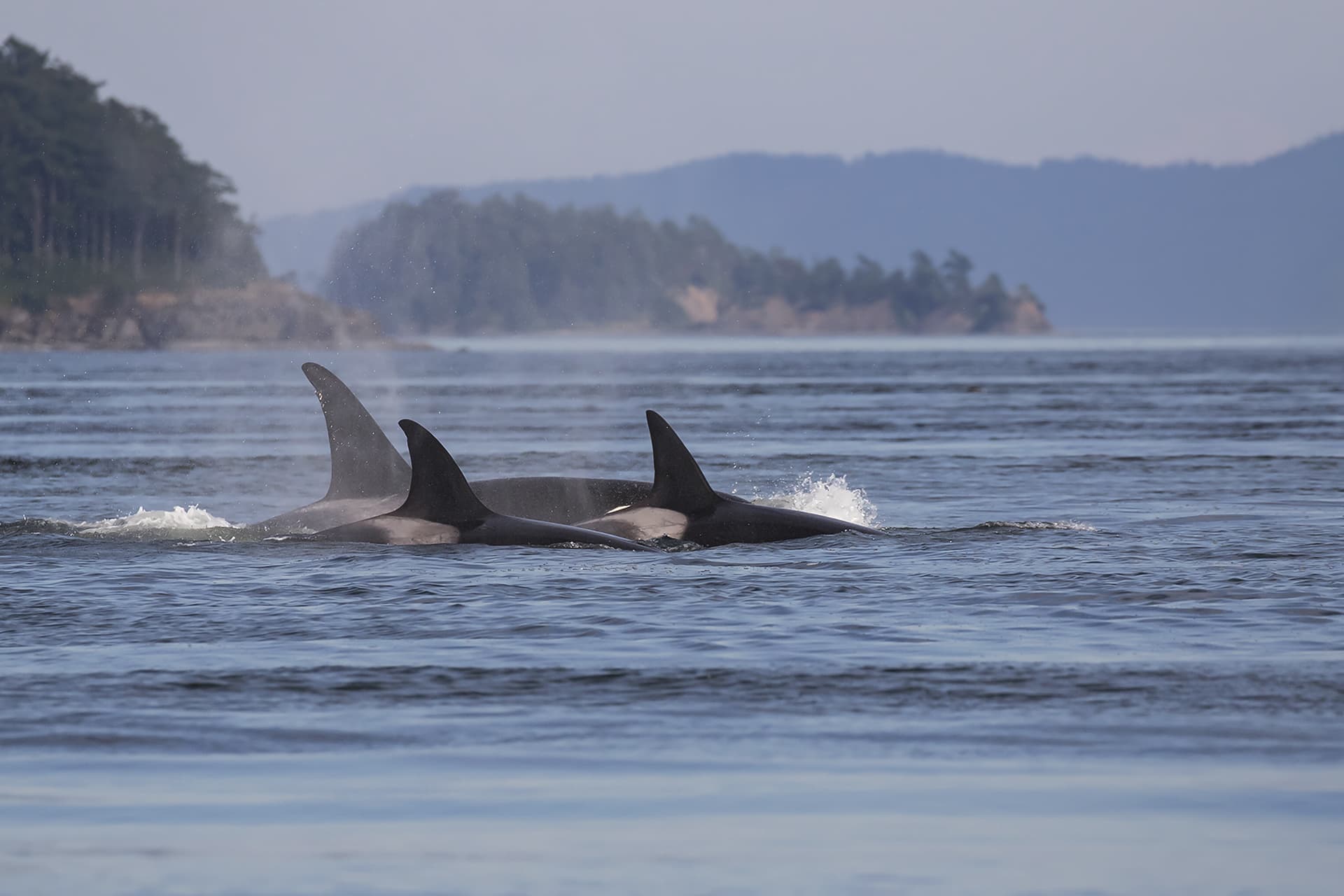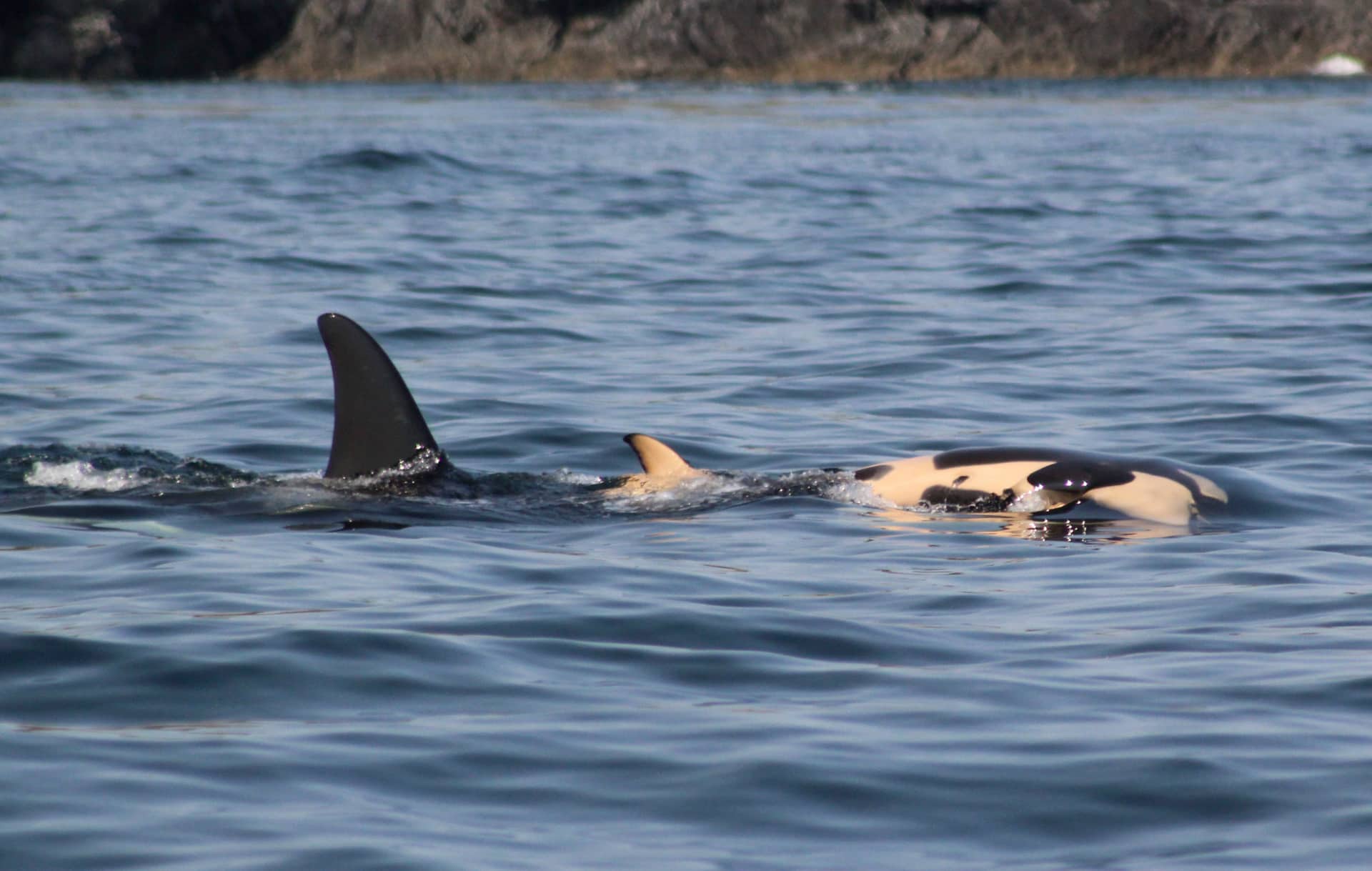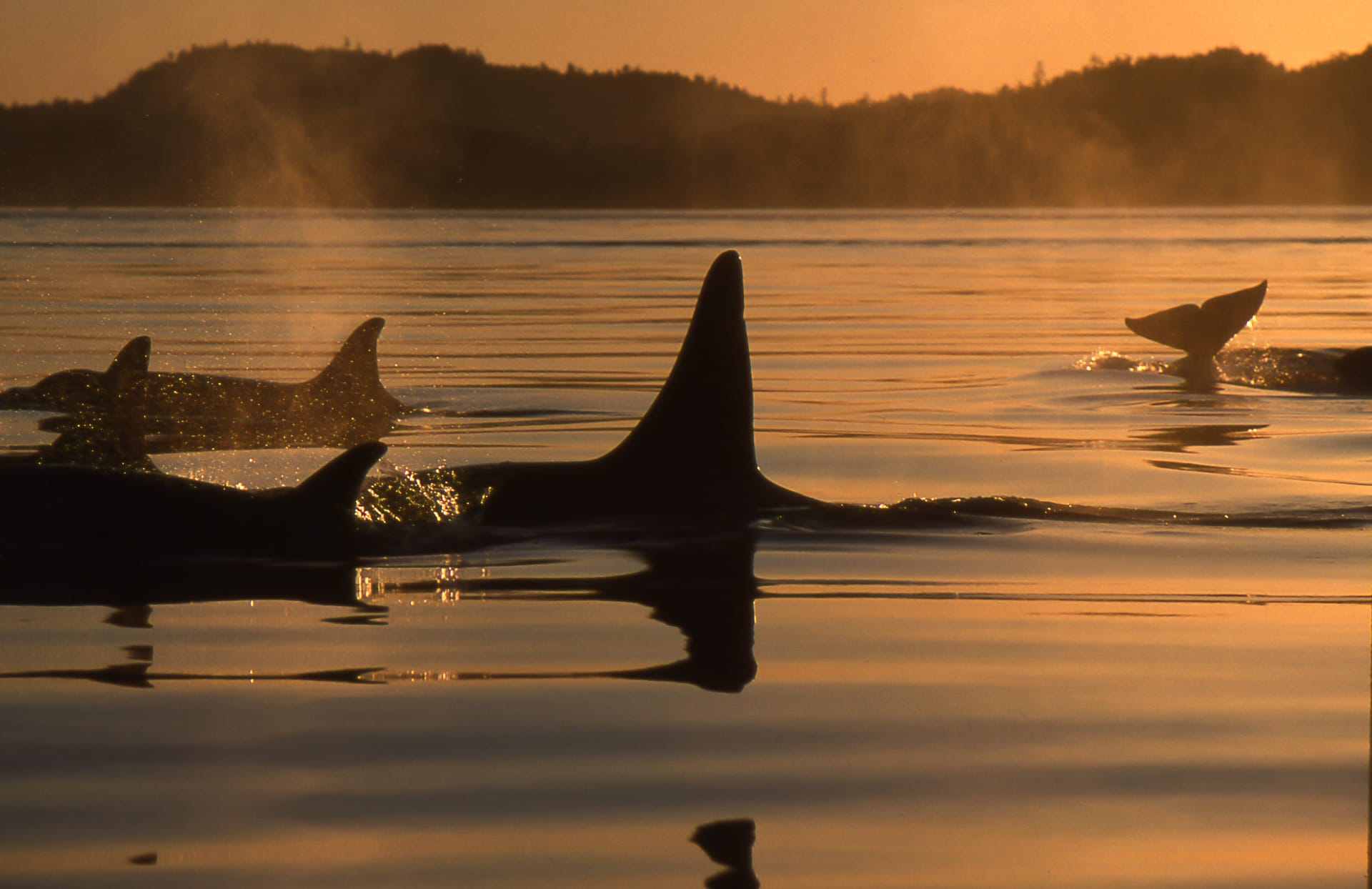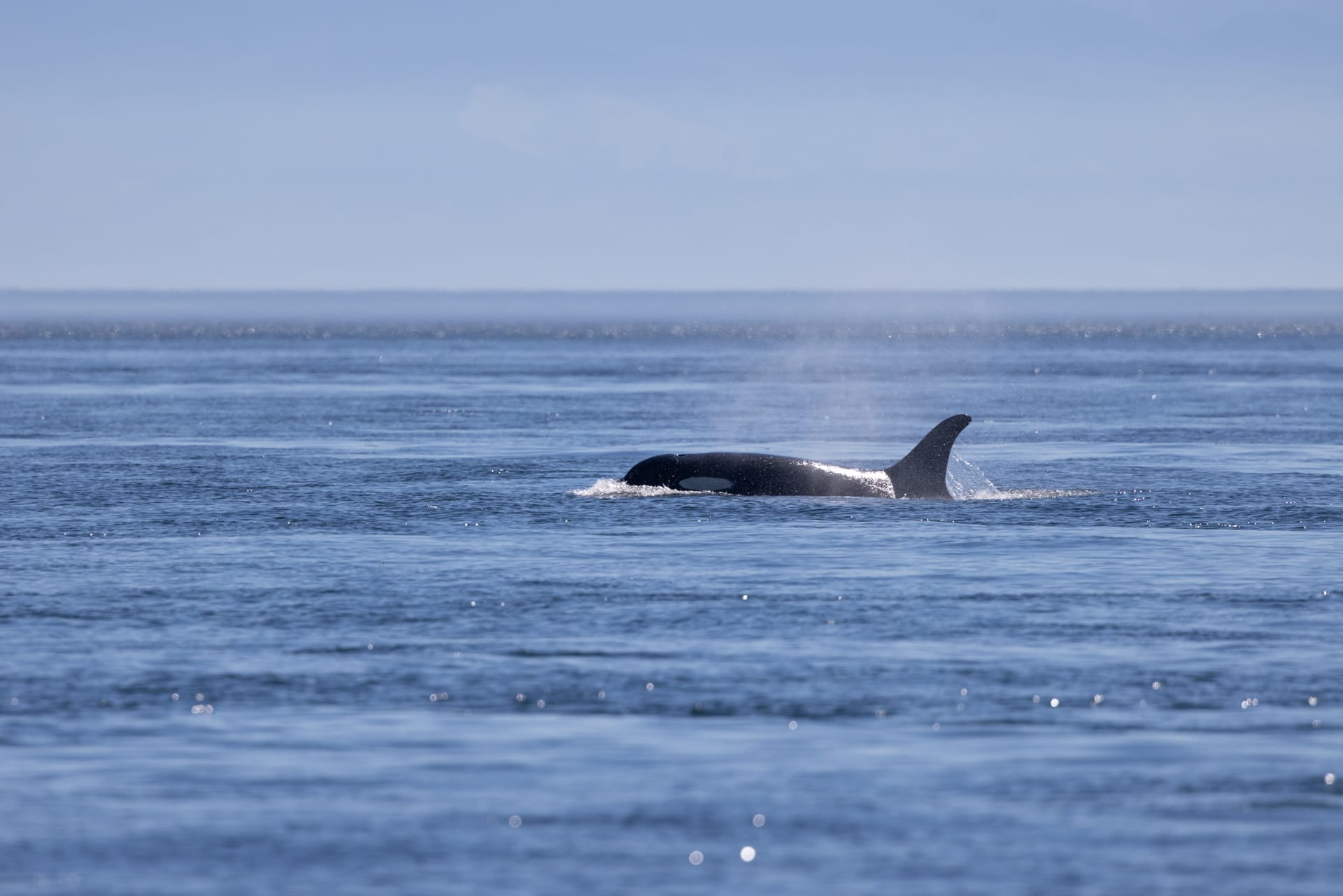
Surely all whales have grandmothers? Well yes, it’s true that the mother of a mother is a grandmother! However, in evolutionary biology, it applies only to post menopausal females. Menopause was until recently thought to have uniquely evolved in humans, as most animal populations need to reproduce until the end of their lives in order to be successful. However, it’s been shown that by giving up reproduction later in life, a grandmother can increase the chance of survival of her daughters’ offspring, known as “the grandmother effect”.
It’s now known that several species of toothed-whale—including the Southern Resident killer whales—also go through menopause. Without her own youngster competing for resources, an orca grandmother can help find and share food with her daughters’ calves, using her inherited cultural and ecological knowledge.
When the Southern Resident grandmother effect research paper was published in 2020, the authors were clear that although they confirmed menopause in this population, it could not be inferred across all killer whale populations.
In this new study, researchers return to the data collected since the early 1970s on three populations of killer whale in the Pacific Northwest: transients (aka Bigg’s), and the Northern and Southern Residents. This archive contains records of 198 Southern Residents, 568 Northern Residents, and 510 transient killer whales. While the catalogue for transients is larger than 510 animals, they opt to exclude infrequently-seen families, and so only use the records with the most reliable data.
They start by first comparing the lifespan of males and females across all three populations. They find that marine mammal-hunting transients are expected to live 10 years longer than their fish-eating resident cousins—likely due to their prey being more abundant.

A Transient killer whale calf in the Salish Sea.
Next the researchers compare the age that females enter menopause; estimated by using the birth date of their last known calf, and taking into account the 18-month gestation period. This analysis shows that most females from all three populations had their last calf between age 37 and 41, suggesting menopause by early 40s.
This finding surprised the researchers, who predicted transient females would go into menopause later than residents. Why did they expect this? In the resident community, all offspring stay in their mother’s pod for life. This multi-generational family unit is thought to increase the positive impact a grandmother can have on the survival of her grandbabies. In fact, this benefit was calculated as over 4 times greater in a pod with a living grandmother, than in one without.
Continued below...
However, in transient families, males and females often leave their mother’s pod—likely to keep numbers small for more effective mammal hunting. The researchers therefore predicted that these dispersals away from the family unit had the potential to weaken the grandmother effect by leaving less calves “at home”.
However, despite this prediction, the research shows no difference between these three populations in the age at which these females reach menopause. In fact, closer study of sightings of these post-reproductive transients (i.e. potential grandmothers) shows they are not on their own, but traveling with sons or daughters. Some transient pods were found to have up to 3 generations of maternally-related family members—similar to resident pods.
Finally, the researchers analyze the post menopausal lifespan of these females. Once again, contrary to forecast, the three populations are found to be similar: on average, these females are living 20 years after the birth of their last calf, so around 30% of their total lifespan, and therefore a very solid time investment in their grandbabies.
The surprising similarities found between females from resident and transient populations leads the researchers to conclude that menopause likely evolved in a shared ancestor. It’s believed fish-eating and mammal-eating “ecotypes” evolved from a common ancestor between 50,000 and 350,000 years ago. In fact, this ancestor is the oldest known to modern killer whales, and so if all living ecotypes evolved from this same ancestor, then they too will benefit from the cultural and ecological knowledge of these older, wiser post-reproductive grandmothers.
Learn more about endangered killer whale grandmothers and why with resident females dying younger, time is not on their side.





